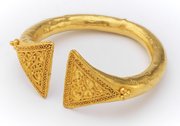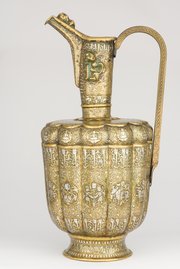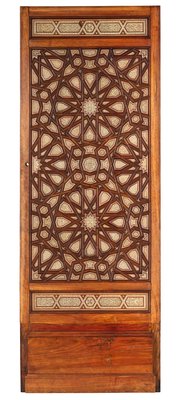
Mughal Celestial Globe
Museum of Islamic Art
- Title:
- Mughal Celestial Globe
- Production place:
- India
- Date:
- 1600 - 1699
- Period:
- Mughal
- Title:
- Mughal Celestial Globe
- Production place:
- India
- Date:
- 1600 - 1699
- Period:
- Mughal
- Material:
- Brass, Gold, Black compound, Solder
- Technique:
- Casting, Engraving, Gilding, Soldering
- Diameter:
- 11.9
This brass globe is cast in a method known as the lost-wax technique, which allowed for a completely hollow circular form to be made with no traceable seams. The sphericity of this method meant that it was perfectly suited as a celestial globe, providing a round surface upon which stars, their zodiac symbols, and calibrated bands used to calculate degrees of latitude could be engraved. While celestial globes were originally invented in Ancient Greece, the earliest surviving examples date from the Islamic world. The Mughal emperors were keenly interested in astronomy and astrology. The second Mughal emperor Humayun (r. 937-947 AH/1530-1540 CE; interregnum; 962-964 AH/1555-1556 CE) was himself a keen student of both, and was even was said to have organized his court and administration along astrological principles. While this particular globe is not signed, it is nonetheless attributed to the 11th century AH/17th century CE, a period when other celestial globes exist, most notably those signed with the name 'Humayuni' - descendants of the famous family of scientific instrument makers associated with the Emperor Humayun. This globe has been mounted onto a later brass bass.



